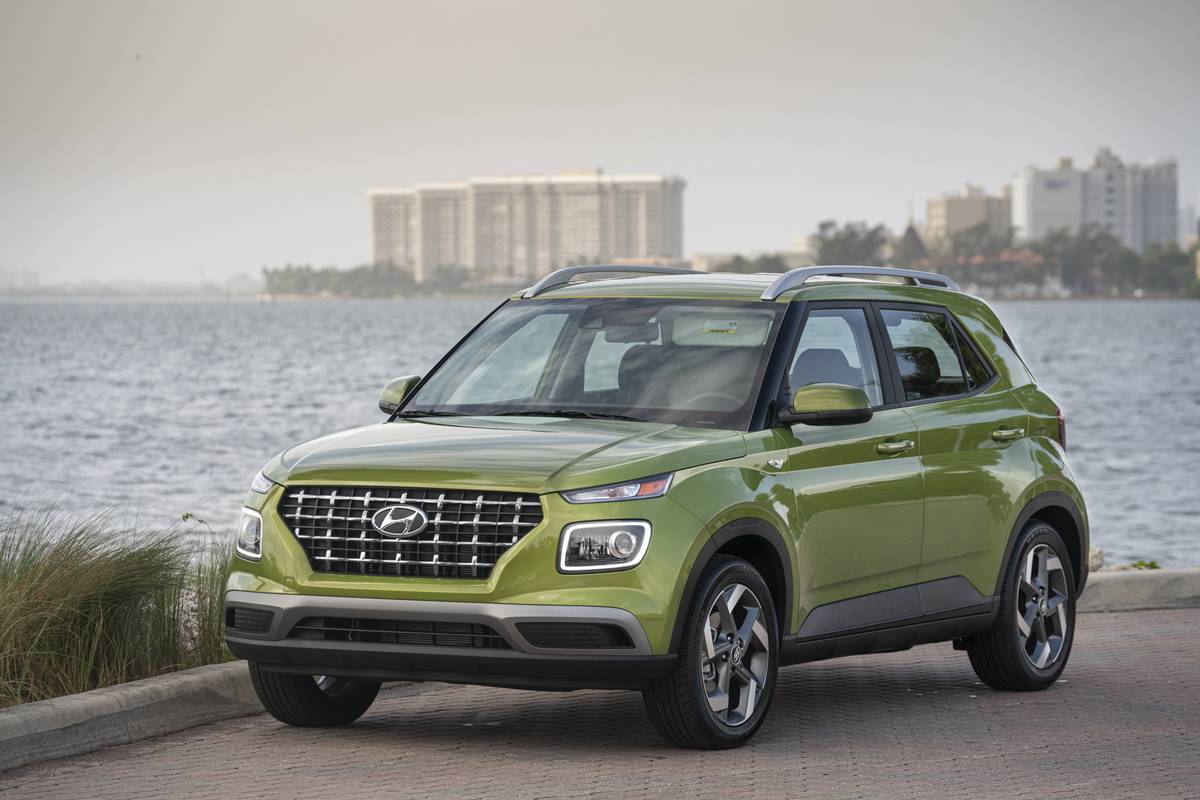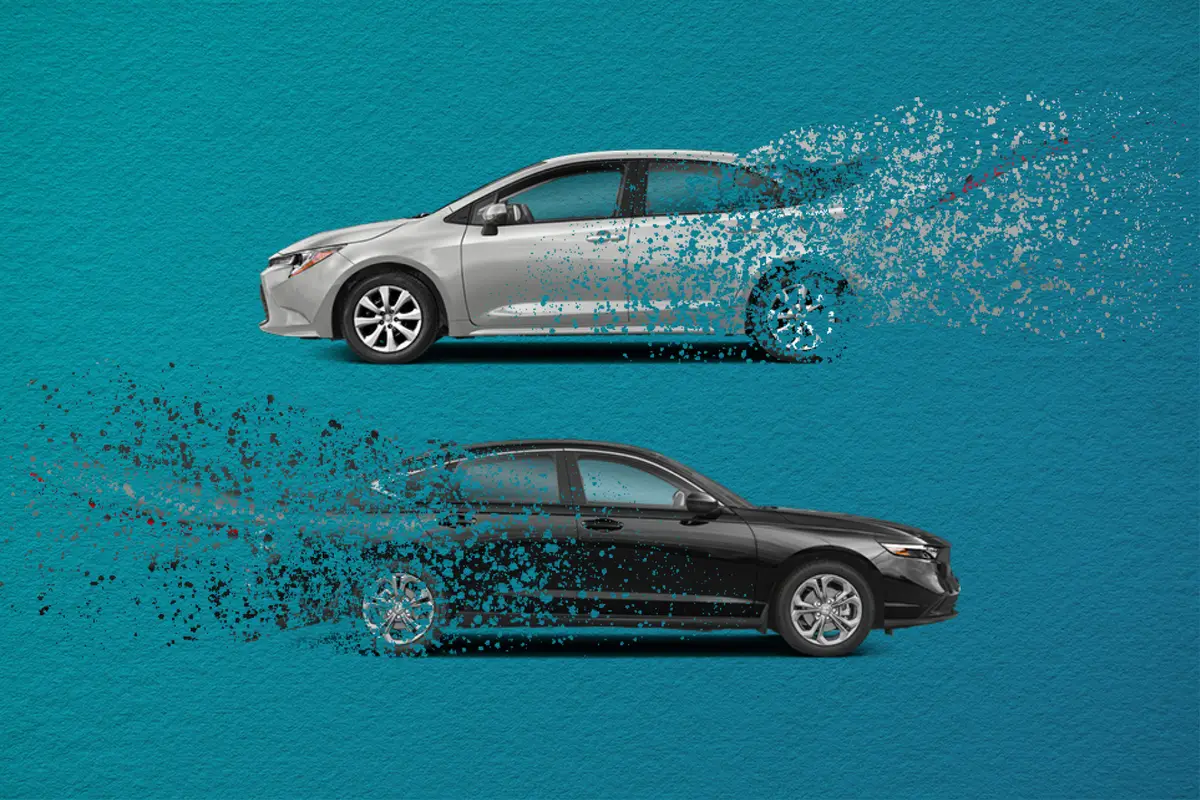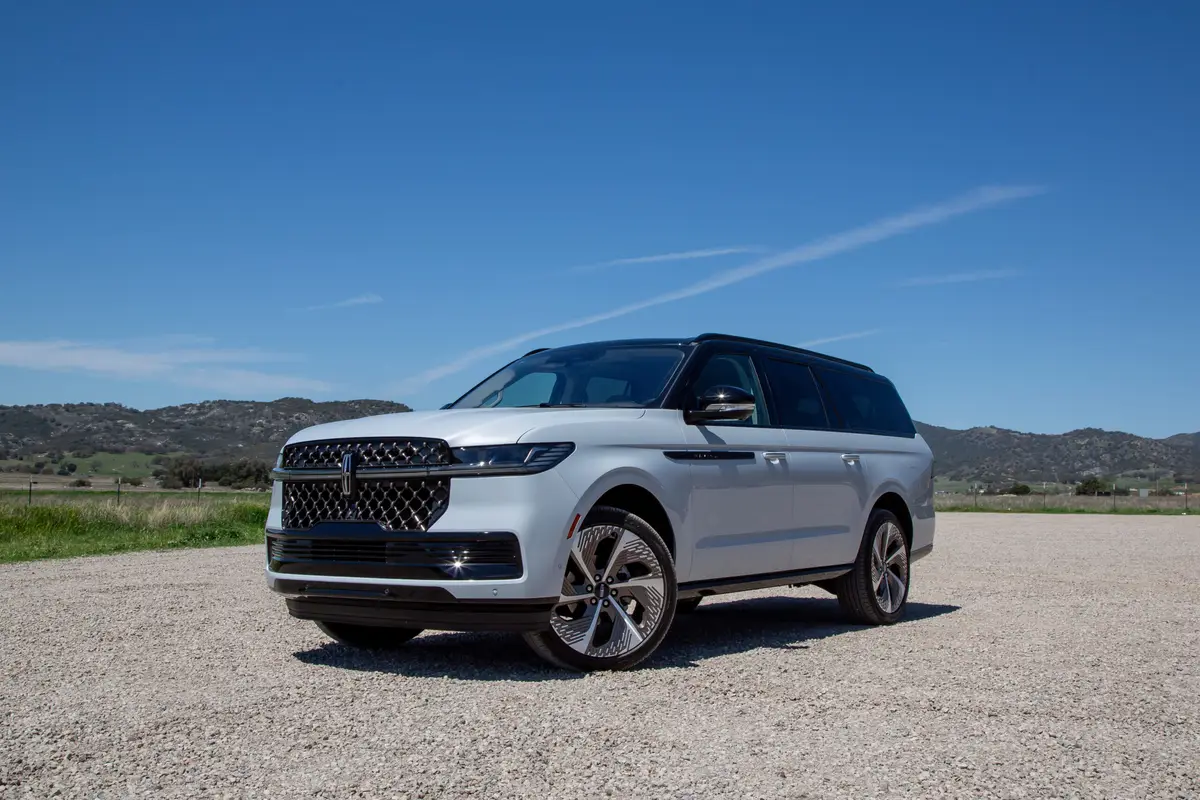2005 Aston Martin DB9: What's New
Vehicle Overview
Introduced at the 2003 Frankfurt Motor Show in Germany, Aston Martin’s newest two-passenger coupe supersedes the long-lived DB7 Vantage. Aston Martin describes the DB9’s new aluminum-bonded body frame as “radical.”
The car holds a 6.0-liter V-12 engine that generates 450 horsepower. Either a conventional six-speed-manual gearbox or a button-controlled six-speed automatic with Touchtronic operation may be installed.
A matching Volante convertible was unveiled at the 2004 North American International Auto Show. The Volante isn’t a coupe with its roof simply snipped off; rather, it was designed and engineered as a convertible from the start.
The DB9 is the first car to be hand built at a new state-of-the-art facility in Gaydon, Warwickshire, England. The factory combines “cutting-edge high technology with handcraftsmanship and tradition,” said Ulrich Bez, chief executive officer of Aston Martin. The DB9 uses a new VH (Vertical Horizontal) platform.
Weighing a moderate 3,770 pounds, the DB9 can accelerate from zero to 60 mph in a claimed 4.7 seconds with the manual transmission and reach a top speed of 186 mph. Sales begin in the fall of 2004. Aston Martin expects to sell 2,000 DB9s per year, of which half will be Volante convertibles.
Exterior
Considered a modern interpretation of traditional design, the DB9 has a long aluminum hood that extends all the way to the car’s leading edge. Minimal “cut” lines help enhance the car’s elegant simplicity. A familiar grille and side strakes help establish kinship with previous DB models. The DB9’s wheelbase is 5.9 inches longer and the front track is 2 inches wider than the DB7’s. The wheels measure 19 inches in diameter, and the brake discs are grooved rather than cross-drilled.
The car’s body panels are all made of aluminum or lightweight composites. Magnesium is used for the steering column, inner doorframes and gear selector paddles. Cast aluminum is used for the windshield surround, which Aston Martin says is an industry “first.”
Placing the gearbox at the rear helps achieve a 50/50 weight distribution, front to rear. The wishbone suspension is made of lightweight aluminum, and dampers are aluminum-bodied. A full undertray reduces lift and drag. Despite being 25 percent lighter than the DB7’s bodyshell, this structure promises more than twice the structural rigidity of its predecessor.
“Aston Martins are not edgy cars,” said Design Director Henrik Fisker. “They don’t have sharp surfaces or pronounced power domes. … The bodywork is elegant and gently covered, like a supremely fit person with great muscle tone.” Rear haunches are wide and curvaceous, and the profile features a prominent trunk. The door handles are flush with the body, and “swan wing” doors rise at a 12-degree angle for easier access.
The Volante convertible’s fabric top folds underneath a hard tonneau cover that sits flush with the bodywork. Dropping the top takes 17 seconds. Sensors can detect a potential rollover and deploy twin roll-hoops from the rear-seat headrests. Aston Martin says the windshield A-pillars can withstand twice the car’s body weight. The LED taillamps illuminate quicker than traditional units.
Interior
The DB9 offers 2+2 seating. The upholstery is full Bridge of Weir leather and is available in 20 new colors. Wood is used only on the top center part of the dashboard and, as an option, for the door caps. Walnut, mahogany or bamboo is offered.
To start the engine, the driver must press a clear glass button. The tachometer dial runs counterclockwise and has no conventional redline. Instead, a red warning symbol appears at various engine speeds, depending on ambient temperature and engine mileage.
The British firm Linn developed the 950-watt 10-speaker music system. A message center in the dashboard has an organic electroluminescent display that offers better resolution and contrast than the usual LCD.
Under the Hood
Aston Martin’s 6.0-liter V-12 engine produces 450 hp. The ZF drive-by-wire six-speed-automatic transmission has no traditional gear lever. Instead, Drive, Park, Neutral and Reverse are selected by buttons. A Touchtronic manual mode permits gear changes using paddles mounted behind the steering wheel. A conventional Graziano six-speed-manual gearbox is also available.
Safety
All-disc antilock brakes incorporate electronic brake-force distribution and Brake Assist. Seat-mounted side-impact airbags and Dynamic Stability Control are standard.
Driving Impressions
Handling is where the DB9 truly excels. This coupe hangs on with a passion through swift curves and yields confidence levels that reach well beyond the sports-car norm. The suspension follows road contours closely, yet ride comfort is rather good.
The DB9 delivers a civilized experience and has plenty of amenities. The dashboard is packed with controls for navigation and other electronic operations; most of the markings are clear. The gauges, however, aren’t so easy to read.
The V-12 engine starts using a button and generates a rich exhaust sound. Gear changes are quite easy using the dashboard selector buttons and steering-wheel paddles, but automatic mode does a fine job, too. After a momentary hesitation to downshift, the DB9 lunges ahead with unbridled force.
Rear headroom is scant and legroom is virtually nonexistent, but the front compartment is roomy enough in a snug, separated cockpit. Forward visibility can be a problem, as the front fenders are hard to see. Surprisingly, the rear window provides a helpful view.
Featured stories



2025 Lincoln Navigator Review: Elephantine Elegance

